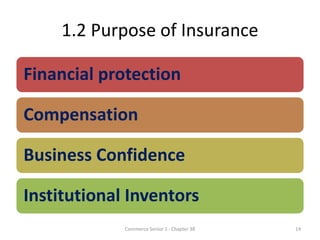Pacific Prime Fundamentals Explained
Pacific Prime Fundamentals Explained
Table of ContentsWhat Does Pacific Prime Mean?The Definitive Guide for Pacific PrimeFacts About Pacific Prime RevealedHow Pacific Prime can Save You Time, Stress, and Money.Pacific Prime Fundamentals Explained

This is since the information were gathered for a period of strong financial performance. Of the approximated 42 million people that were uninsured, almost concerning 420,000 (about 1 percent) were under 65 years of age, the age at which most Americans come to be qualified for Medicare; 32 million were grownups in between ages 18 and 65, about 19 percent of all adults in this age; and 10 million were youngsters under 18 years of age, concerning 13.9 percent of all children (Mills, 2000).
These quotes of the variety of persons without insurance are created from the annual March Supplement to the Current Population Survey (CPS), carried out by the Demographics Bureau. Unless or else noted, national quotes of individuals without medical insurance and percentages of the population with different sort of protection are based on the CPS, the most extensively utilized resource of price quotes of insurance coverage and uninsurance rates.
How Pacific Prime can Save You Time, Stress, and Money.

Still, the CPS is particularly beneficial due to the fact that it generates yearly quotes fairly promptly, reporting the previous year's insurance policy protection estimates each September, and since it is the basis for a constant set of estimates for greater than two decades, permitting for evaluation of patterns in insurance coverage gradually. For these reasons, as well as the comprehensive use the CPS in various other research studies of insurance protection that are presented in this record, we rely upon CPS estimates, with constraints kept in mind.

The price quote of the number of without insurance people broadens when a population's insurance coverage status is tracked for a number of years. Over a three-year duration starting early in 1993, 72 million people, 29 percent of the united state populace, lacked protection for at least one month. Within a solitary year (1994 ), 53 million people experienced a minimum of a month without coverage (Bennefield, 1998a)
6 out of every ten uninsured adults are themselves employed. Functioning does enhance the possibility that one and one's household members will have insurance policy, it is not an assurance. Even participants of family members with two permanent wage income earners have practically a one-in-ten chance of being without insurance (9.1 percent uninsured rate) (Hoffman and Pohl, 2000).
The smart Trick of Pacific Prime That Nobody is Talking About
New immigrants make up a considerable proportion of individuals without medical insurance. One analysis has attributed a considerable section of the recent growth in the dimension of the united state uninsured population to immigrants that got here in the country between 1994 and 1998 (Camarota and Edwards, 2000). Current immigrants (those that came to the United States within the previous 4 years) do have a high price of being without insurance (46 percent), but they and their kids make up simply 6 percent of those without insurance country wide (Holahan et al., 2001).
The connection between medical insurance and access to care is well established, as documented later on in this phase. The partnership in between health and wellness insurance policy and wellness end results is neither straight nor easy, a considerable scientific and wellness solutions research study literature web links health insurance protection to better accessibility to care, better top quality, and boosted individual and population health standing.
Levels of evaluation for taking a look at the impacts of uninsurance. This discussion of medical insurance protection concentrates mostly on the U.S. populace under age 65 because virtually all Americans 65 and older have Medicare or various other public insurance coverage. Additionally, it focuses especially on those with no medical insurance for any type of size of time.
Some Known Incorrect Statements About Pacific Prime
The problems faced by the underinsured are in some areas comparable to those dealt with by the uninsured, although they are normally much less severe. Health insurance, nonetheless, is neither needed nor enough to get access to clinical solutions. The independent and direct impact of health insurance policy coverage on accessibility to health and wellness solutions is well developed.
Others will get the health and wellness care they require also without medical insurance, by spending for it out of pocket or seeking it from companies that use care cost-free or at extremely subsidized prices. For still others, health browse around this web-site and wellness insurance alone does not ensure invoice of treatment as a result of other nonfinancial barriers, such as a lack of wellness care providers in their neighborhood, limited accessibility to transportation, illiteracy, or etymological and cultural differences.
A Biased View of Pacific Prime
Formal research study concerning without insurance populations in the United States dates to the late 1920s and early 1930s when the Board on the Price of Medical Treatment generated a series of reports regarding funding medical professional office brows through and hospitalizations. This problem came to be significant as the varieties of clinically indigent climbed during the Great Anxiety.